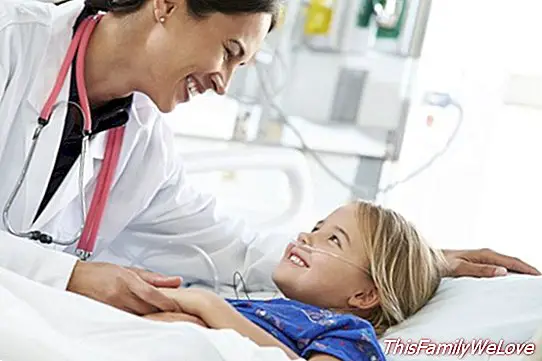Dialysis in children, what are these treatments?
No father likes to see his son in the hospital, however sometimes there is no other option but to take them to these centers to preserve their health. The hardness of some treatments can to surprise and worry parents, as is the case of dialysis.
Know what the dialysis it will help to understand what the child is going through and the measures that must be taken once this treatment is left aside. As for example the complications that can affect or if you have to choose a specific diet during these days.
What is dialysis?
The Spanish Pediatric Association defines the dialysis as a technique that is used to replace the activity of the kidneys. With this treatment what is tried is to purify the blood just as these organs would do while they are going through a disease or have been damaged by some external causes. This measure, although it may seem cumbersome, is of vital importance for minors since it eliminates toxic elements from their organism that could put their health at risk of being maintained.
There are two types of dialysis a child can go through:
- Hemodialysis. It is the technique that uses a pump to push the blood and to pass through a membrane in charge of filtering it. It is connected to the organism through a localized fistula, usually in the forearm. This element is attached by surgery and connects an artery with a vein (arteriovenous fistula). It takes a while since it is created until it can be used, it is usually lasting and with few complications.
In the event that the blood vessels of the forearm are not suitable, the surgeon can place a synthetic tube in its place. When the blood that comes out of the vein reaches the machine to be filtered and cleaned, it is returned to the body through the artery. When this fistula can not be performed or hemodialysis is performed urgently, the access type is a tube that is placed in veins of greater thickness, such as those of the neck or groin, and which is connected directly to the machine. This technique has a higher risk of infection and obstruction, so it should be avoided as much as possible.
- Peritoneal dialysis. This technique uses as filter the peritoneum, the membrane that covers the intestines inside the abdomen and that consists of abundant blood vessels. This treatment consists of a simple surgery that introduces a catheter into the abdomen, with an outlet close to the navel, through which the dialysis fluid is introduced. This remains a time within the body and is responsible for attracting waste substances, which are subsequently removed along with the fluid introduced through the same tube.

How long should dialysis be done?
Depending on the treatment designated by the specialist, the way it will be done will be different. Hemodialysis should always be performed in a hospital and around 3 times a week, depending on the case it is possible that children require more days. Approximately each of these days lasts 4 hours, but the patient's weight and height will also determine this time.
On the other hand, peritoneal dialysis can be performed in the home. In these cases it is the parents who have to perform this treatment after having been trained by a specialist. The exchange of liquids should be done around 4 or 5 times at the end of the day leaving hours for recovery. Each time this element is introduced, a time must be left inside the abdomen to achieve its ends.
Regarding complications, hemodialysis usually presents the following complications:
- Lower blood pressure during filtration. It is the most frequent. It treats diminishing the speed of the filtration and with extra contribution of intravenous serum.
- Allergic reaction to any of the compounds of the dialysis membranes, which may present as itching or urticaria.
- Headache, nausea, vomiting and shortness of breath transiently.
- Gas embolism.
- Infections or thrombosis of vascular access.
Regarding peritoneal dialysis, the possible complications are the infection of the cavity of the abdomen that can cause the child to have a fever, abdominal pain. It is also possible that the fluid that is removed will be cloudy or that the fluid will leak between the skin and the tube, the displacement of the catheter and the infection of the exit orifice of the catheter. These cases usually require hospital visit.
While the child is on dialysis treatment it is recommended that you make a diet low in salt and potassium and follow all the nephrologist's instructions about the amount of liquids you can drink. This will avoid accumulating water and rises in blood pressure, harmful to health.You also need to take an adequate amount of protein and calories, which will be individual for each child, according to their stage of growth, nutritional status and the degree of their disease.
Damián Montero




